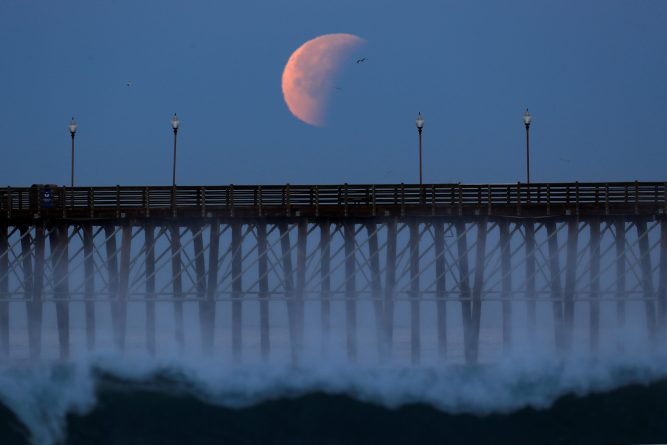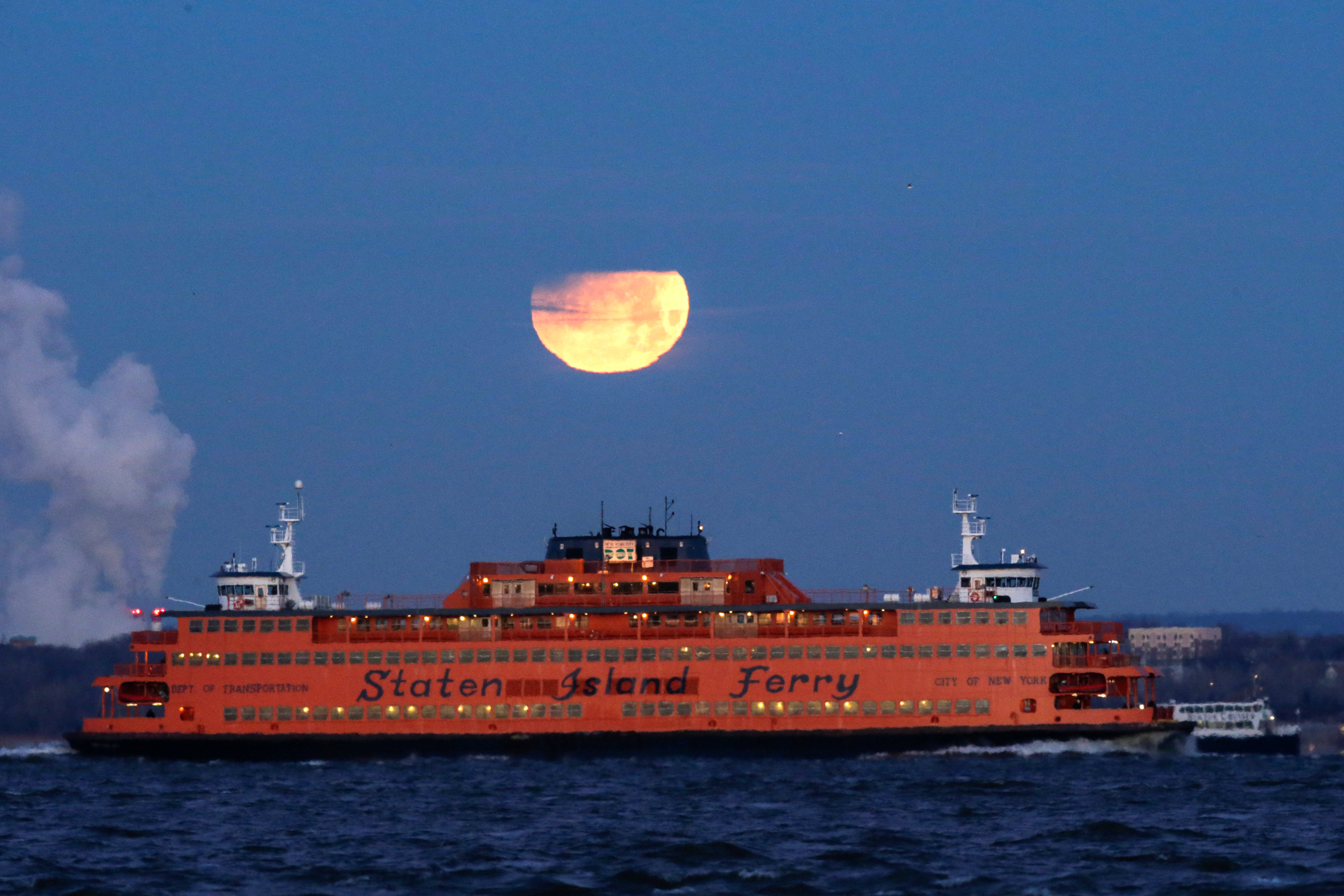Image: A lunar eclipse of a full “Blue Moon” is seen above the ferris wheel on the Santa Monica Pier in Santa Monica, California, U.S., January 31, 2018. REUTERS/Lucy Nicholson
By Alex Dobuzinskis
LOS ANGELES (Reuters) – A thousand people crowded onto a hilltop outside Los Angeles before dawn on Wednesday for one of the most picturesque views in America of a rare lunar eclipse called a “Super Blue Blood Moon,” as the Earth’s shadow fell across its natural satellite.
Outside the Griffith Observatory, which often draws tourists looking at the city’s famous Hollywood sign, people lounged on the grass and peered through telescopes for a better look at the red-tinted “blood moon” shadow.

“I didn’t expect to see this many people and it kind of feels like nice inside to be like, ‘Aw! Other people know about this and want to come see it,'” said Sam Rubaye, a 34-year-old property manager in Los Angeles who came up with friends.
In western North America, the eclipse began at 3:48 a.m. Pacific Time (1148 GMT), according to NASA. Those on the East Coast were less fortunate: the moon had set before the eclipse was in full swing, NASA said.
The eclipse occurred during the rare occasion of a second full moon in a single month, otherwise known as a “blue moon,” and during a point in the moon’s orbit at which it has reached its closest position to Earth, thus making it appear larger and brighter in the sky than normal, as a “super moon.”
The reddish appearance of the lunar surface – the moon did not entirely disappear from view during the eclipse – was caused by rays of sunlight passing through Earth’s atmosphere as the moon fell into our planet’s shadow.
Culinary student Monique Ramirez, 21, dragged three friends along for the drive, not disclosing their destination until the last minute.
“Once we got up here, the moon looked so much closer. So it was cool seeing it like that,” Ramirez said, as she lay under a blanket facing the moon.
The last time all three conditions occurred for a single lunar eclipse visible from North America was in 1866, according to the meteorological forecaster AccuWeather.
Just before the moon emerged from a total eclipse, Griffith 0bservatory director Ed Krupp performed a rite intended to pay whimsical homage to myths about eclipses that date to ancient Babylon. Back then, some people believed they had to frighten away a mysterious creature swallowing the moon.
In a wizard’s garb complete with a pointed hat, Krupp marched through the crowd along with several assistants, chanting “dragon be gone.”
(Reporting by Alex Dobuzinskis; Additional reporting by Jonathan Allen; Editing by Scott Malone, Andrew Hay and Frances Kerry)
Copyright 2018 Thomson Reuters. Click for Restrictions.




